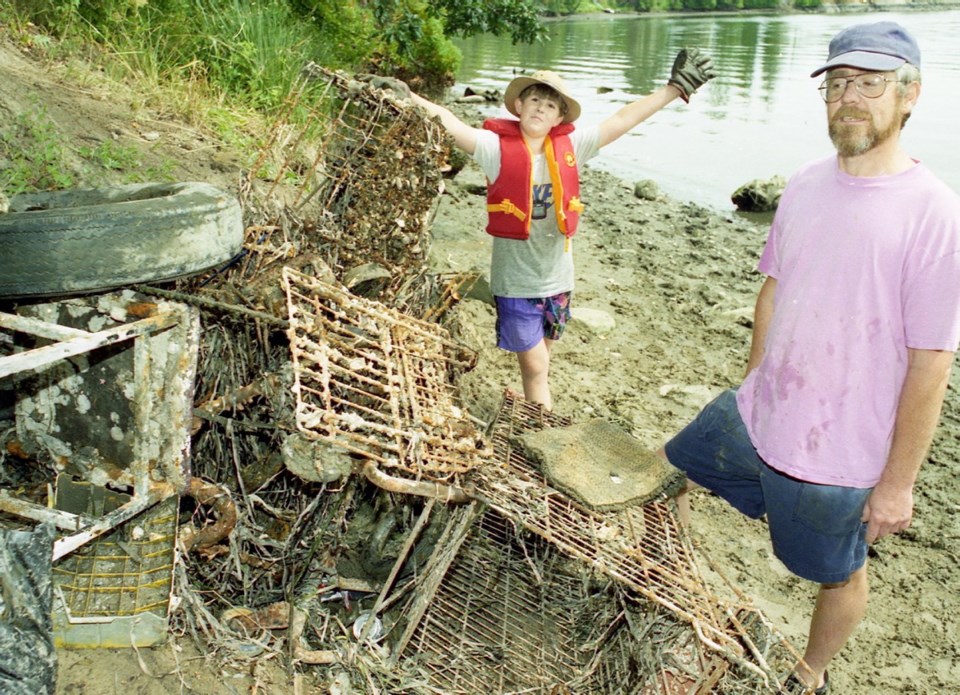 Two different stories have played out on the Gorge waterway over the past 20 years and the contrast between them couldn’t be more striking.
Two different stories have played out on the Gorge waterway over the past 20 years and the contrast between them couldn’t be more striking.
The first one is about John Roe, a nearby resident who rowed out one day with his young son in 1995 and started hauling garbage out of water. For previous generations, the Gorge was the go-to place for aquatic fun. But neglect and pollution over the years had gradually erased that concept from the city’s memory. It was nice to look at it, but few people actually used it.
Some scuba divers and a dozen volunteers showed up the week after Roe’s first foray to continue the effort. Nine months later, they had extracted a 32-tonne pile of garbage from the Gorge. Other groups pitched in, the scope was broadened and it took hold. After five years of dirty, unpaid labor, the story culminated in August 2000.
The Gorge Swim Festival was held, the first time since the 1930s that anyone dared to officially invite people to swim there. I can still remember being startled at the advertisement for the inaugural event. Swimming in the Gorge? Really?
The point of this brief history is that it all happened because a single individual decided to do something.
The other story is less inspiring. It’s about the derelict liveaboard boats that have cluttered the waterway off and on for about the same period of time. That’s not the kind of thing a citizen can tackle on their own. It’s a governmental responsibility. And various governments have spent years dithering, passing the buck and focusing single-mindedly on avoiding doing much of anything about the problem.
That might start changing this weekend on at least one part of the Gorge, when the City of Victoria’s latest deadline expires and the boats might — or might not — be subject to removal. If it finally happens, it will have been a long time coming.
There’s a remarkable achievement gap between one guy who had a good idea and decided to execute it, and the combined authorities of the federal, provincial, municipal and regional governments.
All that authority is precisely the reason for the gap. The Gorge is just as choked with overlapping authorities as it used to be with garbage. The federal government has nominal authority over the water. The province regulates the seabed. The municipalities rule the foreshore. Each government has different entities at play.
Roe’s Veins of Life group eventually disbanded, but he appears to be getting involved again in the effort. He said Wednesday there are 19 different agencies to deal with when it comes to delving into matters related to the Gorge.
The City of Victoria’s role will be front and centre this week. There are 24 vessels and four floating wharves illegally occupying Victoria’s part of the Gorge. New limits on mooring kick in Friday, and the handful of people living on the boats have been served notice.
The city considered an outright ban, but as usual, government jurisdictions ran into each other, so it was dropped. Another telling sign: The city couldn’t even act on its own — it had to get a “licence of occupation” from B.C. a year ago before it could do something.
Nine of the occupants showed up at a meeting Tuesday, held to offer them assistance in relocating, where some progress was made.
The removal might be subject to injunctions and enforcement orders, so the problem could run for more weeks or months. There was a previous deadline declared in July, after which three vessels were removed.
Roe recalls a time in the 1990s when a number of boats were removed on fairly short notice. But they started creeping back, while other problems continued to fester. There are dozens of private docks along the waterway and only a fraction of them are legal. Public access points have been choked off. And despite the effort that began 21 years ago, there is still lots of debris, or a new generation of debris, that needs to be cleaned out.
But mostly, there needs to be one single entity that regulates the Gorge from one end to the other. Preferably with Roe, or someone like him, involved.



